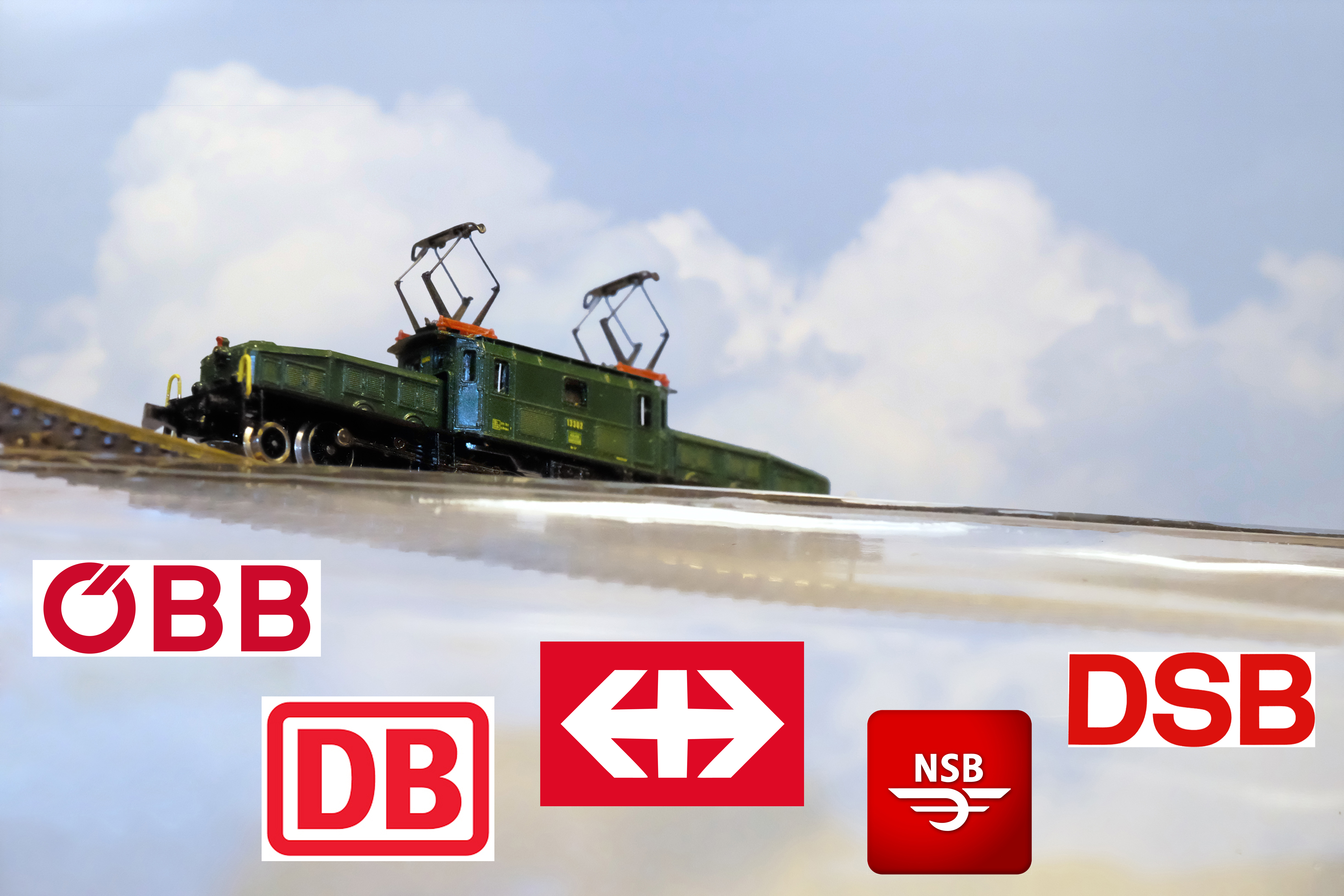Some complexity exists with the classification and numbering of Swiss Railway locomotives which is not limited to separate systems in place to classify railcars and locos thus duplicated classifications exist for the two types of motive power. A discussion of Swiss railway classification is in order as a basis to further discuss their numbering system.
Swiss classification includes the use of letters to denote type of loco and motive power. Marklin’s 8850 is one example of a class Ae 6/6 loco with destination signs for “Zurich”. According to the Swiss classification system the capital ‘A’ is given for locos that reach maximum speed of 85 to 110 km/hr. Small case letter ‘e’ is given for electric locos. And 6/6 is Co-Co wheel arrangement. A Swiss railcar has not been produced in ‘Z’ by Marklin, but one such example would be the EMU Bhe 4/6 11 from depot Monte Generoso. ‘B’ stands for 2nd class accomodations, ‘h’ stands for rack fitted, ‘e’ stands for electric powered, with wheel arrangement 4/6 (1B-B1).
Classification prefix letters for locos is as follows: R– max. speed in excess of 110 km/hr A– max. speed 85-110 km/hr B– max speed 70-80 km/hr C– max speed 60-65 km/hr D– max speed 45-55 km/hr E– shunting G– narrow gauge, H– rack fitted, O– open wagon, T– tractor, and X– departmental vehicle
Classification prefix letters for railcars and multi-units: A– 1st class accommodations, B– 2nd class accommodations, D– baggage compartment, S– saloon, Z– postal compartment
Classification suffix letters applied to all motive power: a– battery powered, e– electric powered, em– electro-diesel, h– rack fitted, m– diesel or gas powered, r– restaurant, rot– rotary snowplow, t– self-propelled department vehicle such as crane or snowplow
Note: to differentiate between classes with similar classifications numeals are used for example Re 4/4′, Re 4/4”
Also note: newly classified locos incorporate a three digit number thereby replacing the fractional numbers, but the classification letters are maintained in the new method.
Since 1989 all locos on the SBB Railways produced in that year and subsequent years follow the current numbering system, all locos before 1989 were not renumbered unless a major overhaul occurred with a specific loco. Museum locos maintain their original number. Three sets of numbers are indicated on 1989 to the present locomotives in Switzerland, this system follows this numbering scheme: First digit: 0– steam loco or historic railcar, 1– meter gauge loco, 2– tractor, 3– electric loco with 3 powered axles, 4– electric loco with 4 powered axles, 5– electric railcar, 6– electric loco with 6 powered axles, 7– departmental self-propelled vehicle excluding locos, 8– diesel loco, 9– electric shunting loco. Second digit: 0– express railcars, 1-6– sub class index (bogie electric locos), type of electric loco, number of powered axles of a diesel loco, 7-8– not used, 9– not used generally except for rigid frame electric locos. Third digit: 2-4– two, three, four voltage loco or railcar, 5-8– owned by private railway. Fourth thru Sixth digits are the running numbers followed by the final number which is the ‘computer check digit’.
The computer check digit is used to verify the correct digits were used for classification and numbering. For the Swiss locomotive the last digit is the computer check digit which corresponds to the result of a simple calculation of class and running numbers: multiply each digit of the class and running numbers alternately by 1 and 2, add up the result and subtract from the next larger whole ’10’ number. For example: Swiss class 460 033-4 is verified in the following manner- 4×1, 6×2, 0x1, 0x2, 3×1, 3×2= 4+1+2+0+0+3+6=16. Thus 20-16=4!
Reference material: Swiss Railways, published by Platform 5, written by David Haydock, Peter Fox and Brain Garvin.




























